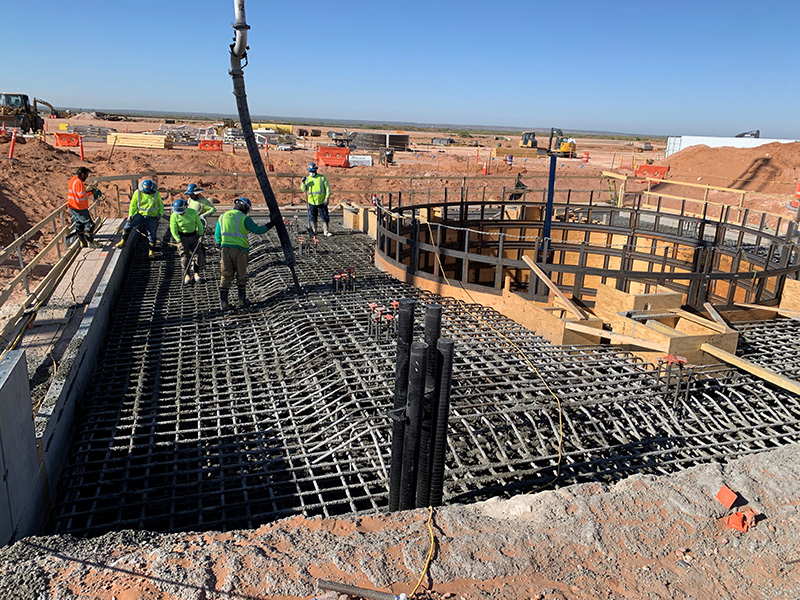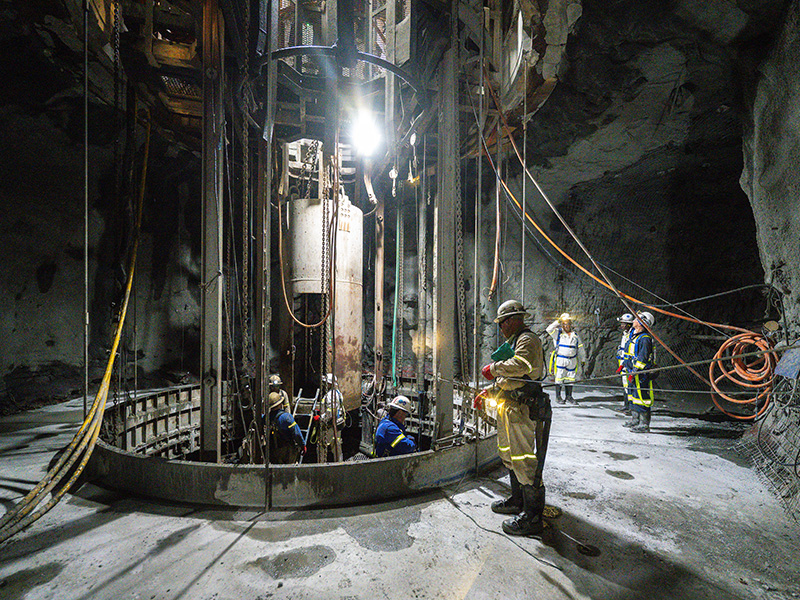CURRENT & RECENT FLAGSHIP PROJECTS
Setting the standard with landmark projects
Innovative solutions across the mining and engineering sectors
UMS has successfully delivered numerous flagship projects that demonstrate our capability, innovation, and commitment to excellence. Our experience spans across mining, metallurgy, and infrastructure development, positioning us as a trusted leader in the industry.
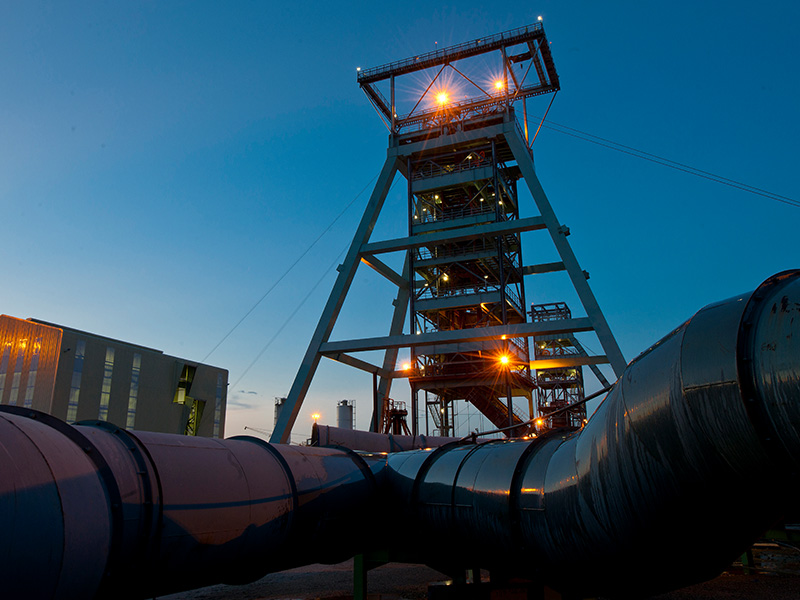
FEATURED FLAGSHIP PROJECTS

Waste Isolation Pilot Plant Project
Waste Isolation Pilot Plant Project
Location:
United States of America
Scope:
Ventilation Shaft (7.9m diameter, 694m deep),
Drifts (1890m)
Project Overview:
The Waste Isolation Pilot Plant (WIPP), located approximately 26 miles (42 km) east of Carlsbad in Eddy County in New Mexico, US, is a deep geological repository licensed to store transuranic radioactive waste for 10,000 years. The storage rooms at the WIPP are 2,150 feet (660 m) underground in a salt formation of the Delaware Basin. The plant started operation in 1999 and is still in operation today.
Because of a growing backlog of waste and the need for a holistic ventilation upgrade, it was decided that a new ventilation system needed to be constructed which included a new air intake shaft (Shaft Number 5) and associated drifts (haulages) to the existing underground storage facility.
A new joint venture company, HWSS, between UMS Shaft Sinkers and Harrison Western (based in Denver Colorado) was awarded the contract for the new vertical shaft and associated drifts.
The scope of work included the sinking of Shaft Number 5, a 2,275-foot-deep (694 m) vertical shaft with a finished minimum diameter of 26 feet (7.9 m). The shaft was constructed by the drill (twin boom electrohydraulic jumbo) and blast method, with cleaning being done by clam muckers.
The shaft is concrete lined for the top 800 feet (244 m) and the top 62 feet (19 m) of concrete is reinforced. The scope also included the procurement and installation of the plenum which intersects the shaft at ± 60 feet (18 m) below grade, and the furnishing and installation of the concrete foundation and anchor bolts required to support the plenum. The fabrication and installation of the steel Shaft Number 5 cap was also included as well as the permanent electrical feeder cables that were installed in the shaft.
There are approximately 6,200 lineal feet (1,890 m) of drift in the project ranging in width from 16 to 30 feet (4.9 m to 9.1 m), and 14 to 20 feet (4.3 m to 6.1 m) in height. The client would break through into the new drifts (from the existing storage facility) once HWSS had evacuated from site.
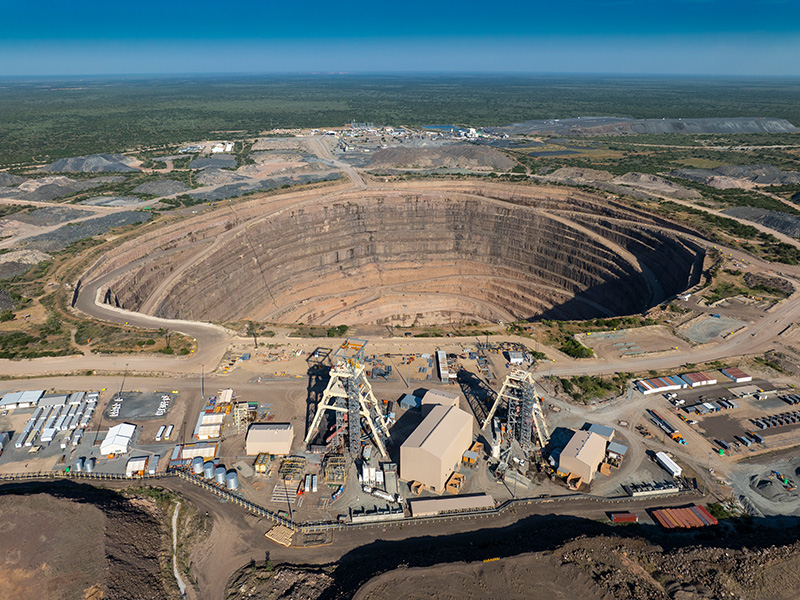
Lucara Diamond – Karowe Mine Project
Lucara Diamond – Karowe Mine Project
Location:
Botswana
Scope:
Ventilation Shaft (6m diameter, 715m deep),
Production Shaft (8.5m diameter, 765m deep)
Project Overview:
The Karowe Diamond Mine (KDM)S is an existing open pit mine located in Central Botswana. The mine began commercial operations in July 2012 and currently operates a 2.7 Mt/a processing facility. The KDM has mined and processed approximately 20 million tonnes of ore since the start of operations.
The current open pit reserve is expected to be fully depleted by 2025. The mine currently has approximately two years of stockpiled kimberlite ore. Lucara has evaluated extending the mine life by mining underground after the completion of open pit mining, with the processing of stockpiles taking place opportunistically through the mine life. Stockpiles are also expected to provide all the mill feed material for the last two years of planned mill operations.
Access to the underground mine will be from a 796 m deep production shaft, 8.5 m in diameter, driven from the surface to 245 m AMSL. The shaft will be equipped with two 21 t skips for production hoisting and a service cage for man and material movement through the mine. There is also an Auxiliary single drum winder provided in the Production shaft that will provide personnel transport to the underground levels.
This shaft will also serve as the main fresh air intake to the mine. A second shaft, 6.0 m in diameter, 729 m deep, driven from surface to 267 m AMSL. This shaft will serve as the main exhaust route and secondary egress for the mine. The two shafts are offset from the kimberlite pipe approximately 375 m northwest of the South Lobe, well outside of the potential subsidence zone, and 100 m from each other.
The UMS scope is to sink, line and equip the Production Shaft and to sink and line the Ventilation Shaft. The initial station lateral development phase is also part of our current scope:
- Ventilation Shaft (6m diameter, 715m deep)
- Production Shaft (8.5m diameter, 765m deep)
Technical shaft sinking parameters:
- Sinking advance = 3,8 m per blast (36,5 hr cycles)
- Drilling method: 4 & 6 boom pneumatic jumbos
Cleaning method: VSM Clam muckers
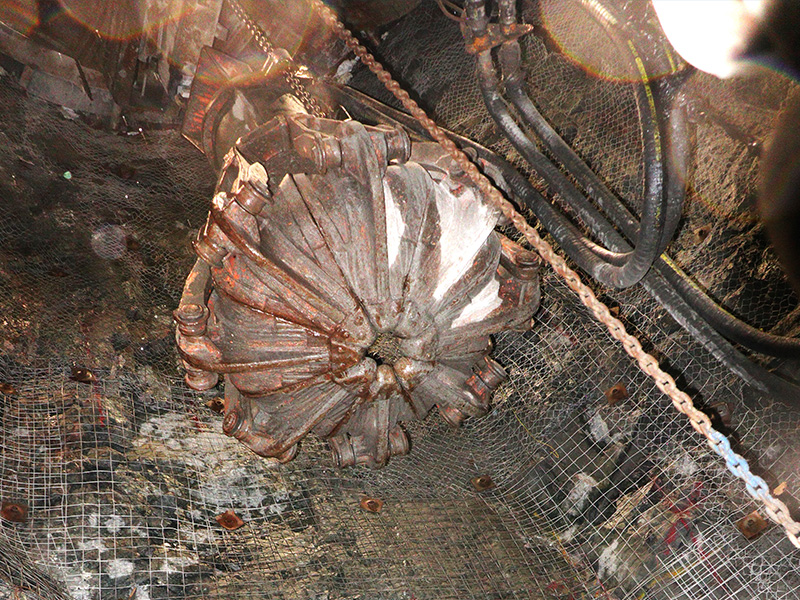
ERO Copper – Pilar Nova Vertical Shaft Slype & Line Project
ERO Copper – Pilar Nova Vertical Shaft Slype & Line Project
Location:
Brazil
Scope:
Hoist Shaft (6.3m diameter, 1550m deep)
Project Overview:
The Pilar Nova Shaft Project commenced in quarter four of 2021 and includes the engineering and design plus procurement of all the surface infrastructure and services, specification and installation of the winders (hoists) plus the design, sinking and equipping of a vertical shaft, to access the deeper ore-body of the Pilar Underground Mine located in the State of Bahai in Brazil.
The 6.3 metre finished diameter, 1550 metre vertical shaft is designed for the hoisting of up to 2.2 Mtpa of rock and the raising and lowering of 840 persons over a four shift day. The four-compartment 1550 metre deep shaft will be serviced by two double-drum winders; one dedicated to rock hoisting at a rate of 2.2 Mtpa and the other dedicated to raising / lowering up to 840 persons per day working a four-shift cycle.
Construction commenced in January 2023 and by the end of the year the Clients’ dedicated personnel winder had been installed in a purpose built winder-house, for use as the kibble winder during shaft sinking, a UMS Group four-drum winder had been installed as a temporary stage (Galloway) winder and services including electrical distribution, water and compressed air reticulation had also been installed to service shaft sinking operations initial and production requirements once the shaft is commissioned.
There are many unique aspects to the Project in that many of the infrastructure design and equipment specifications were completed in the UMS South Africa offices in Johannesburg as was competitive bid procurement service before the Client awarded contracts to suppliers and contractors in Brazil. A notable example is the nominal 1000 metric ton headgear which was designed by UMS SA engineers, fabricated by a Brazilian steel fabricator and erected by a Brazilian construction contractor with all the challenges of geographical remoteness (time zones), language (Portuguese and English) and business culture overcome through patience and consideration.
At the time of writing the shaft is more than 450m deep i.e. approximately one third of its way to shaft bottom using mechanised equipment including a vertical shaft drill-rig and an innovative four-boom horizontal drill-rig for shaft sidewall support. Unique to the shaft sinking method is a 1.8m raise-bore hole through the centre of the shaft, made possible by the plus 30 year old underground mine providing access via its ramp system to shaft intersections at three elevations. Sinking shaft broken rock is mucked into the raise-bore hole and then recovered by load-haul-dumper and haul-truck from the cubby closet to sinking shaft bottom.
UMS SA have a dedicated expatriate crew of 75 shaft-sinking experienced persons on the Project working 24/7 and are supported by 25 Brazilian nationals for administration and supply chain. Also in the employ of UMS Brasil are safety engineers and technicians to provide guidance and ensure compliance with Brazilian safety and health requirements.
The shaft system also includes underground rock handling infrastructure including; two ore and one waste tip – capable of receiving haul-trucks 65 metric ton capacity haul-trucks, two ore-passes of 5.1 metre diameter by 45 metres long, one waste pass 5.1 metre diameter by 90 metres long and a 8.1m diameter by 50 metre long crushed ore silo – located below an underground twin-stream ore-crushing chamber. Crushed ore and waste rock will be transferred from the crushed ore silo and/or waste pass by conveyors to the shaft conveyance (skip) loading arrangements on -1050m Level. This system has similarly to the infrastructure, been designed by UMS SA and is being constructed by Brazilian contractors.
The project schedule forecasts completion of the shaft system by the end of 2026.
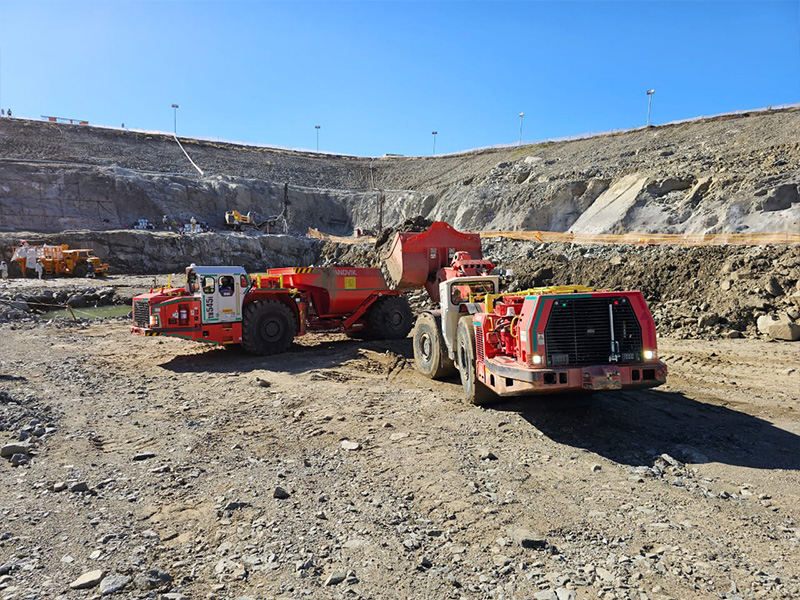
Sedibelo Mine Project
Sedibelo Mine Project
Location:
North West Province, South Africa
Scope:
Conveyor Decline (5.5m x 5m)
Service Decline (5.5m x 5m)
Chairlift Decline (4.5m x 4.5m)
Project Overview:
Sedibelo, an open-pit mine in the Western limb of the Bushveld Complex (Pilanesberg), transitioned to underground operations in August 2022. UMS Group services were contracted for this project, which involved the development of a triple-decline access to the east block. This included a conveyor decline (5.5m x 5m), a service decline (5.5m x 5m), and a chairlift decline (4.5m x 4.5m), all at a 9-degree declination, as well as lateral, level, and infrastructure development. The project is complete.
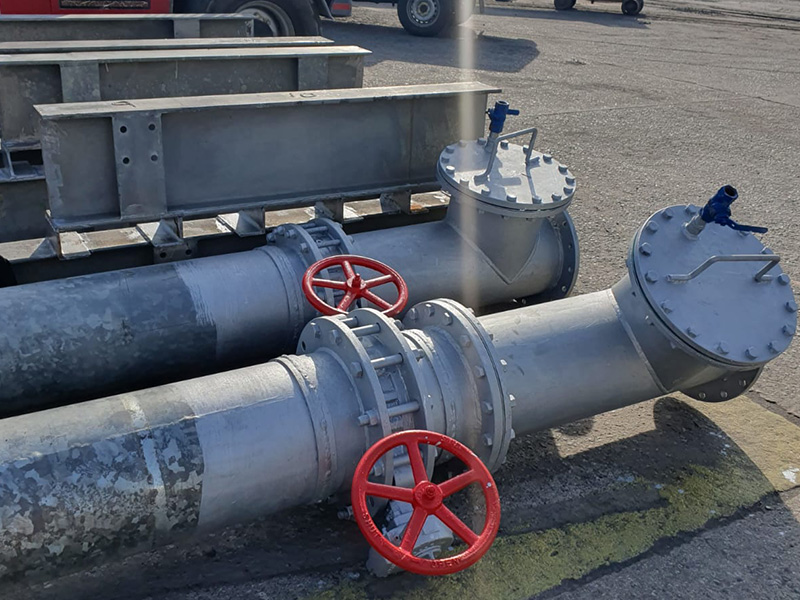
Anglo American Tumela Mine Project
Anglo American Tumela Mine Project
Location:
Limpopo Province, South Africa
Scope:
Underground Structural Steelwork
Project Overview:
Tumela Mine, part of the Amandelbult complex in the northwestern limb of the Bushveld Mineral Complex (between Northam and Thabazimbi), contracted UMS to provide specialised skills for the installation of underground structural steelwork in the loading arrangement. UMS Group is also manufacturing pump columns for mine dewatering following a flooding incident. This project, which began in November 2024 and is scheduled for completion in April 2025, currently employs six personnel.
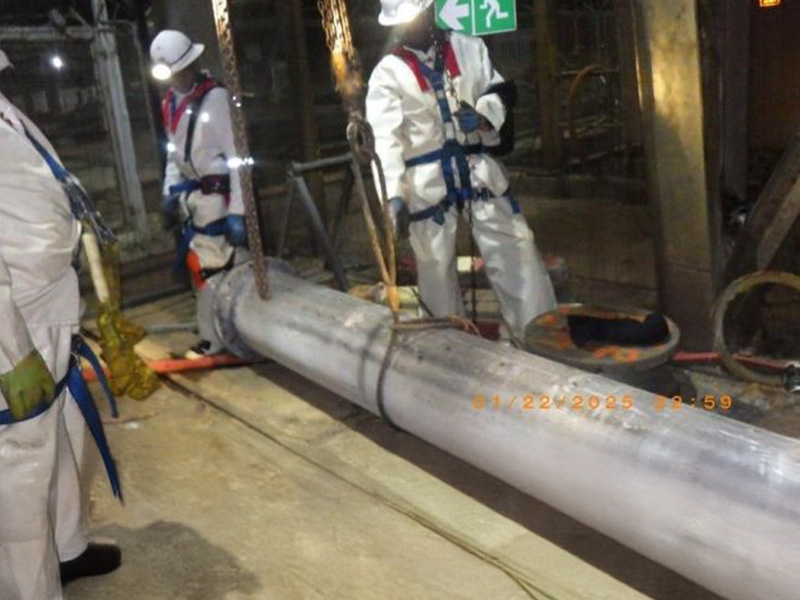
Sibanye – Stillwater Cooke 1 Project
Sibanye – Stillwater Cooke 1 Project
Location:
Gauteng Province, South Africa
Scope:
Pumping Column
Project Overview:
Sibanye Cooke 1 shaft, located in the West Wits line of the Witwatersrand Basin near Randfontein, is currently under care and maintenance following its closure. UMS is installing a pumping column to facilitate mine dewatering, enabling a more permanent water management solution. The project involves refurbishing one of two 400 NB Main Pump Columns, including gasket replacement and shaft bracket securing. The column will be installed from 109 Level to 49 Level, spanning approximately 600 meters. This project, which began in October 2024 and is scheduled for completion in August 2025, employs 12 personnel.
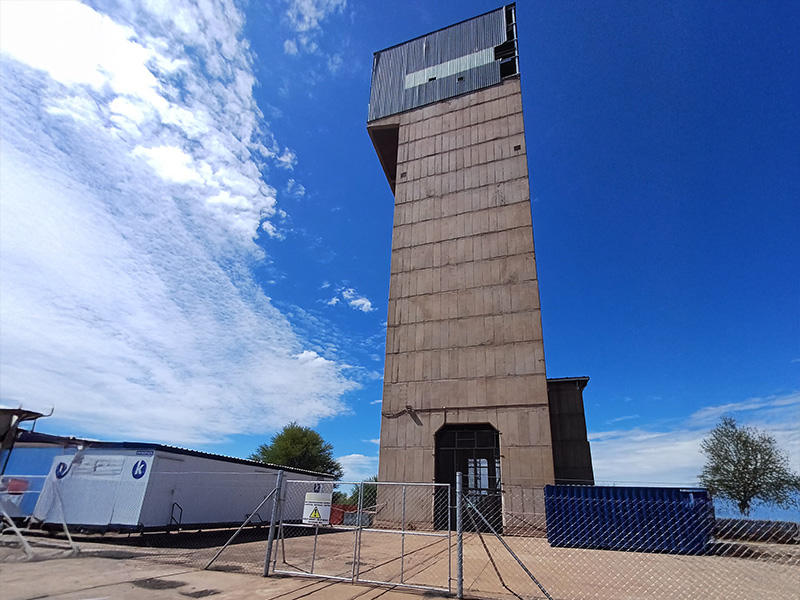
South 32 – Middelplaats Project
South 32 – Middelplaats Project
Location:
Northern Cape Province, South Africa
Scope:
De-watering Infrastructure
Project Overview:
South 32’s Middelplaats Mine, located in the Kalahari Basin near Kathu, has contracted UMS Groupto de-water the Middelplaats Mine, supplying water to the Mamatwan plant operations. UMS Group is responsible for the design, procurement, fabrication, and construction of the necessary de-watering infrastructure for the Middelplaats Mine Shaft. This project, which began in November 2024 and is forecasted for completion in July 2025, currently employs 15 personnel.
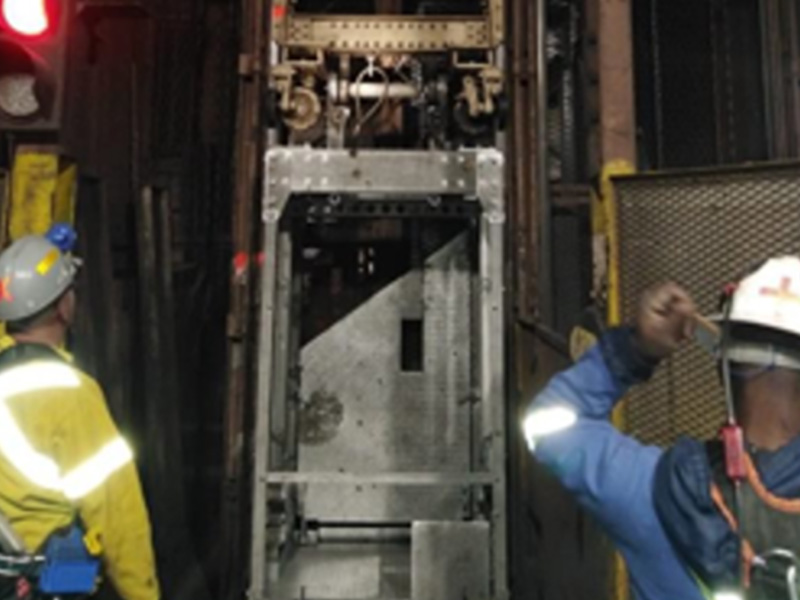
South 32 – Wessels Project
South 32 – Wessels Project
Location:
Northern Cape Province, South Africa
Scope:
Vertical Shaft Refurbishment
Project Overview:
South 32’s Wessels Mine, located in the Kalahari Basin near Hotazel, has contracted UMS Group to refurbish its vertical shaft, ensuring safe and prolonged operations. The comprehensive shaft rehabilitation includes the removal of redundant steelwork, replacement of shaft steelwork, descaling service columns and cables, installation of new wall brackets, stripping of old cables and brackets, and installation of new service pipes. This ongoing project, which commenced in 2019 and is forecasted for completion in 2026, currently employs 19 personnel.

Impala 20# Mine Project
Impala 20# Mine Project
Location:
North West Province, South Africa
Scope:
Man-winder Gantry Repairs
Project Overview:
Completed in June 2023, the project involved repairs to the man-winder gantry, a conical settler, the rock winder gantry, bulkheads, chutes, and the headgear loading bin. The project began in July 2022.
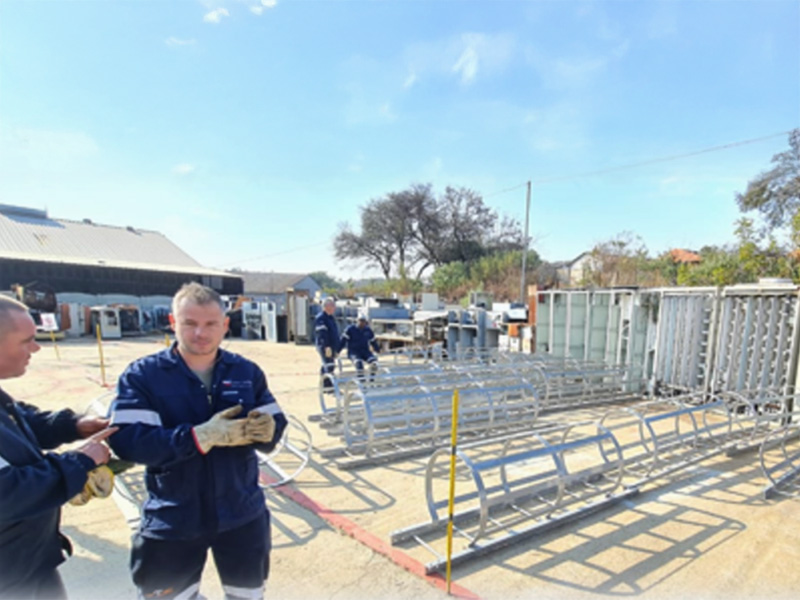
Harmony – Kusasalethu Project
Harmony – Kusasalethu Project
Location:
North West Province, South Africa
Scope:
Shaft Rehabilitation
Project Overview:
The scope of work encompassed shaft rehabilitation, specifically the removal of existing steelwork and the installation of replacement steelwork within the shaft between 95 and 98 Level. The project was successfully completed in December 2022, having commenced in March 2022, and utilized a workforce of 21 individuals.
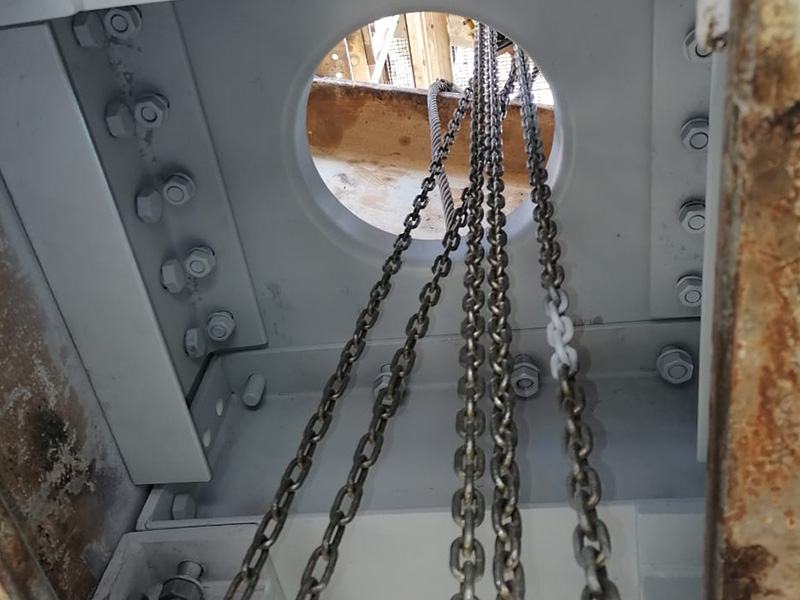
Impala 11# Mine Project
Impala 11# Mine Project
Location:
North West Province, South Africa
Scope:
Removal and Installation of Headgear Steelwork
Project Overview:
The scope of work involved the removal of the damaged headgear steelwork and the installation of new steelwork after a counterweight incident caused significant structural damage. Underground structural steel repairs were also completed. This project was successfully completed over a two-month period, from December 2023 to January 2024.
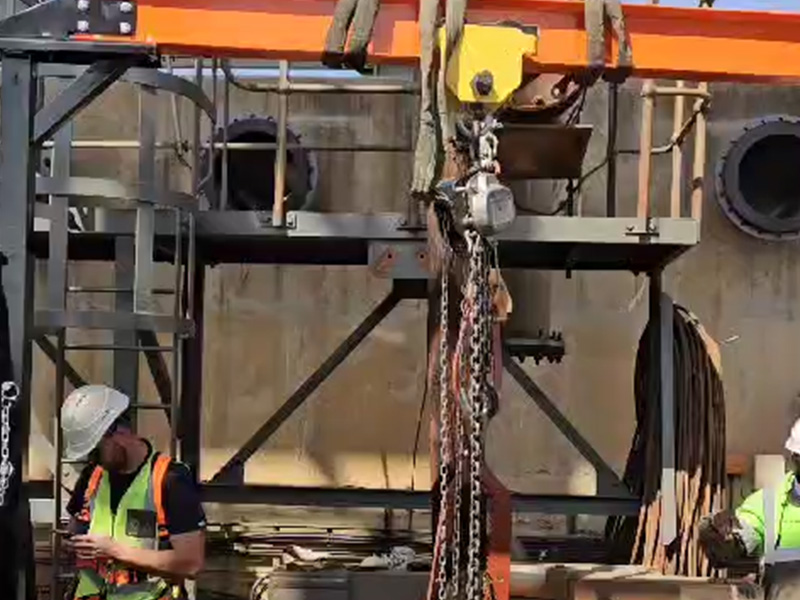
Nafasi Water Project
Nafasi Water Project
Location:
South Africa
Scope:
Custom Clamp Manufacture
Project Overview:
The project involved the design and manufacture of a custom clamp to remove a fallen wooden shaft guide that was obstructing the de-watering pump. The team successfully removed the guide, allowing de-watering to resume. The project was completed in April 2024.

